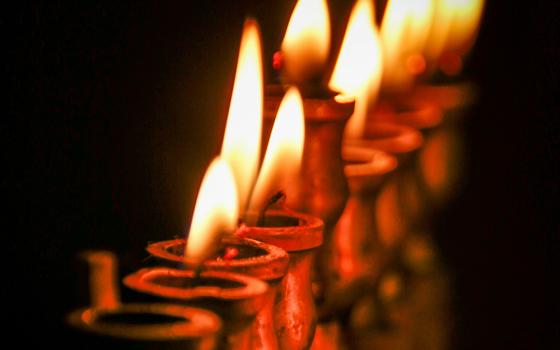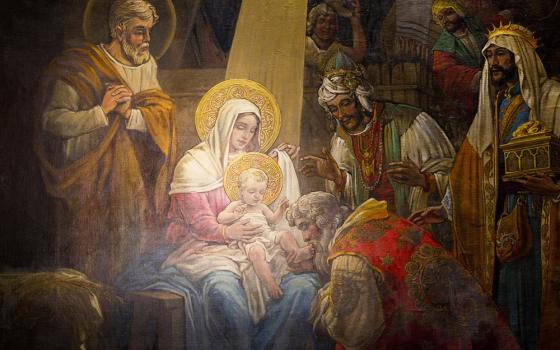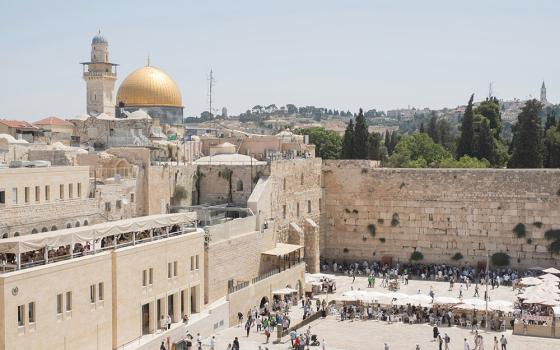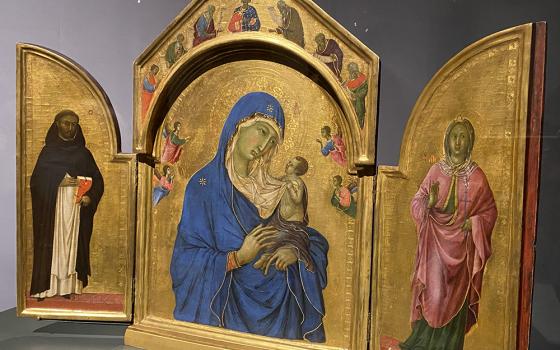A staute of Our Lady of Sorrows of Chandavila is seen in this June 28, 2016, photo taken in La Codosera, Spain. (CNS/Wikimedia commons/Andresmparra)
Devotions at a Marian shrine in Spain that communicate Mary's "close and affectionate presence" can and should continue, the Dicastery for the Doctrine of the Faith said.
Cardinal Víctor Manuel Fernández, dicastery prefect, authorized the local archbishop to issue a document so that the Shrine of Our Lady of Sorrows of Chandavila can "continue to offer to the faithful who wish to approach it, a place of interior peace, consolation, and conversion."
The cardinal's letter titled, "A Light in Spain," was approved by the pope during an audience Aug. 22 and was published on the dicastery's website Aug. 23.
The devotion began after the Second World War, when two girls, 10-year-old Marcelina Barroso Expósito and 16-year-old Afra Brígido Blanco, separately had similar spiritual experiences in which they said they encountered Mary where the shrine now stands in La Codosera, Spain, along the country's border with Portugal.
The Vatican dicastery did not make a ruling about the nature of the apparitions themselves but said, "there is nothing one can object to in this beautiful devotion, which presents the same simplicity that we can see in Mary of Nazareth, our Blessed Mother. Many positive aspects indicate an action of the Holy Spirit in so many pilgrims who come, both from Spain and Portugal, in the conversions, healings, and other valuable signs in this place."
The story of the alleged apparitions holds that Marcelina saw a dark shape in the sky that she identified as Our Lady of Sorrows, "with a black mantle full of stars, on a chestnut tree," the cardinal's letter said. "More than the vision itself, this girl had the profound experience of feeling the embrace and the kiss that the Virgin gave her on her forehead." Months later, Afra claimed to have had a similar experience.
While "this assurance of Our Lady's close and affectionate presence is perhaps the most beautiful message," the cardinal continued in his letter, "what stands out the most is the presence of the Virgin that instills consolation, encouragement, and confidence."
Advertisement
When Mary asked Marcelina to walk toward her on her knees through dry chestnut husks, thorns and stones, "she does not do so to cause her suffering," the letter said. "On the contrary, she asks for her confidence in the face of this challenge: 'Do not be afraid; nothing will happen to you.'"
The story said that Mary placed a carpet of reeds and grass over the treacherous terrain as the girl walked across it on her knees, and that Mary then asked that a chapel be built on that spot in her honor.
"This call of the Virgin, to trust in her love, gave this poor and suffering girl hope, and also the experience of feeling dignified," Fernández wrote in his letter. "Is that simple mantle, made of reeds and grasses with which Our Lady protected the girl's knees, not a beautiful expression of Mary's tenderness?"
The cardinal also noted that the two young women "led a discreet and inconspicuous life" after their alleged visions; Marcelina, the younger woman, became a religious sister and joined a convent.
Writing to Archbishop José Rodríguez Carballo of Mérida-Badajoz, the archdiocese where the shrine is located, Fernández told him the dicastery approved granting the devotion a "nihil obstat" — a permission to continue and promote devotion without issuing judgment on the validity of an event's supernatural status.
Since the dicastery issued new guidance on the discernment of alleged supernatural phenomena in May, it has released statements on eight different Marian devotions; in two cases — one involving alleged apparitions in Amsterdam and another in Trevignano Romano, Italy — the dicastery said the apparitions did not have a supernatural origin.








